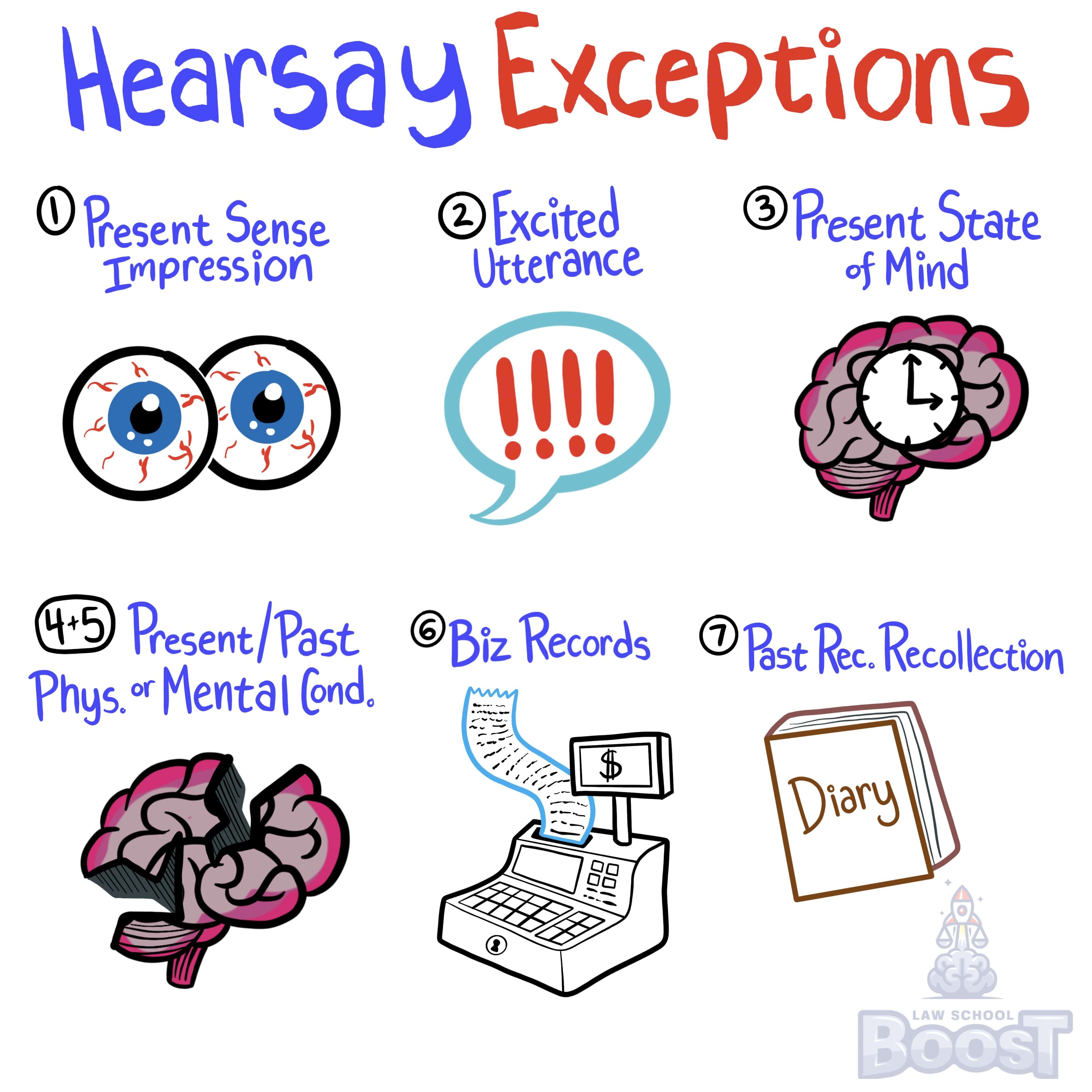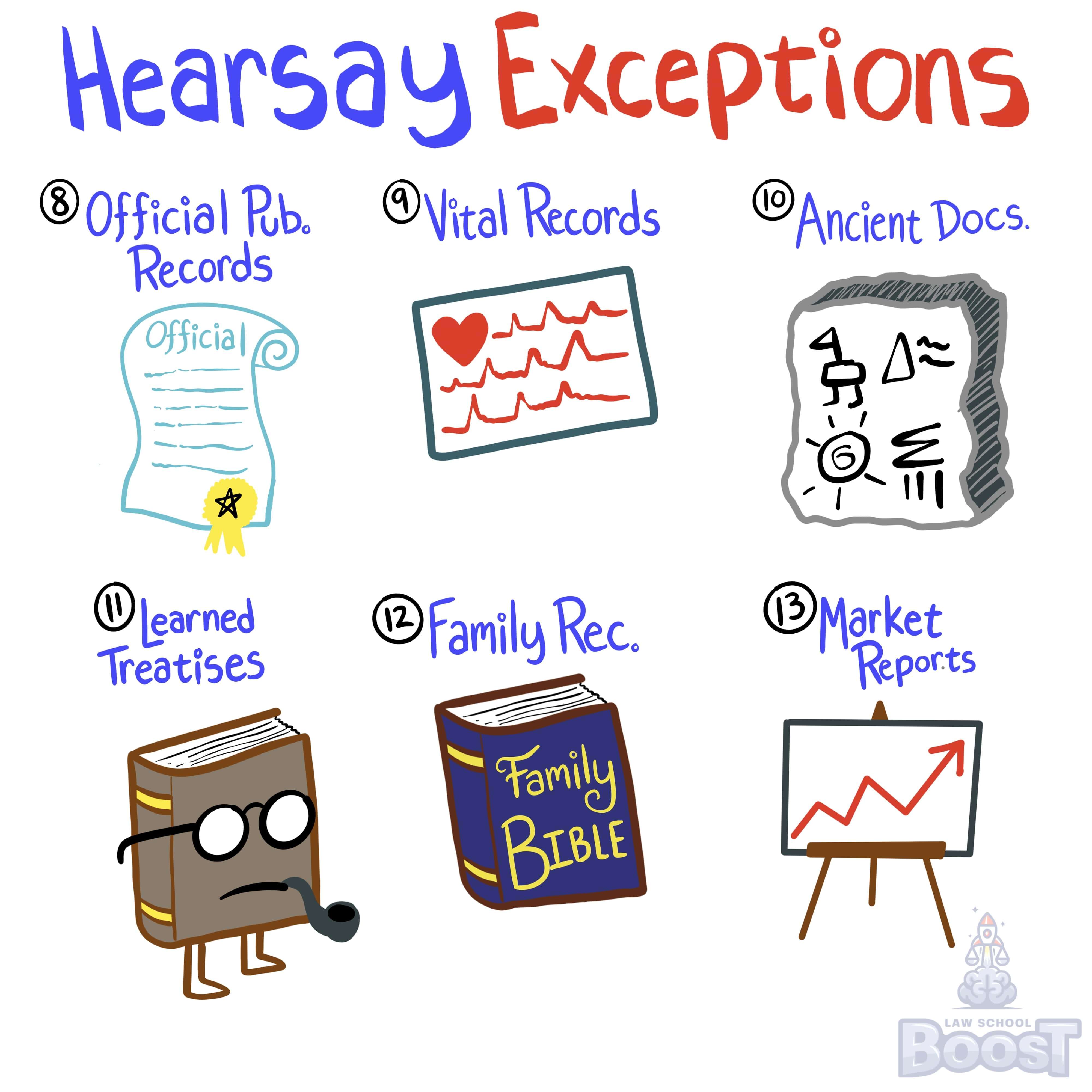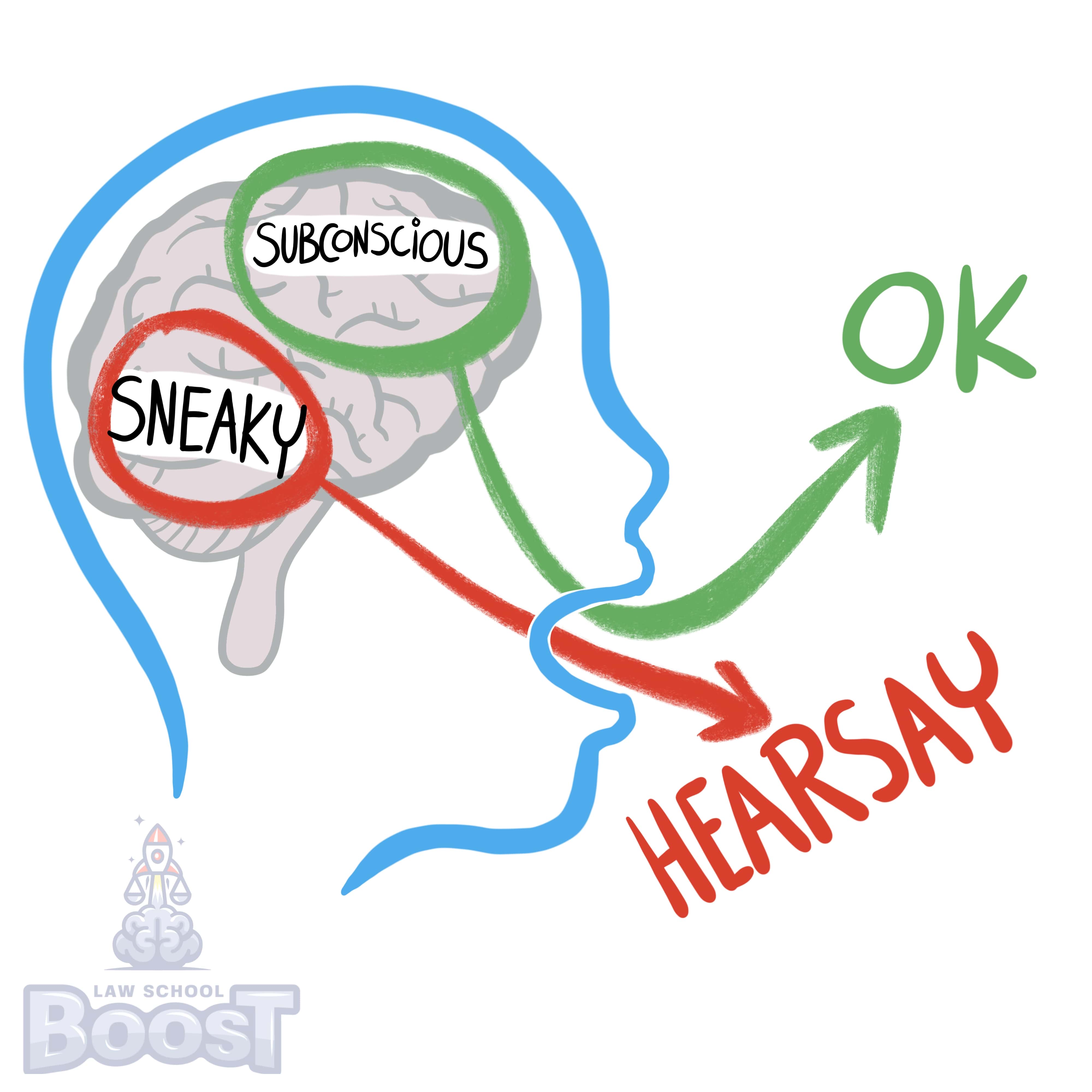🦅
Federal Evidence • Hearsay Exceptions - Unavailability Required
EVID#044
Legal Definition
These statements describe, narrate, or explain infliction or threat of physical injury if made contemporaneously. The circumstances must be trustworthy, and it must be in writing, recorded, or made to law enforcement or medical personnel.
The witness must be unavailable.
The witness must be unavailable.
Plain English Explanation
Imagine someone gets hurt or threatened and they quickly write it down, record it, or tell someone like a police officer or a doctor about it. In California, this kind of statement can be used in court, even though it was made outside of court. This is because these statements are often made in the heat of the moment and are considered trustworthy. They help to show what happened during an incident, like an attack or a threat.
The rule exists because sometimes, what someone says right after getting hurt or threatened can be really important to understanding what happened. These statements are often more reliable than something remembered and said much later. This rule is known informally as the "OJ Exception" because it became well-known during O.J. Simpson's trial, where statements made by his ex-wife about past abuse were important pieces of evidence.
The rule exists because sometimes, what someone says right after getting hurt or threatened can be really important to understanding what happened. These statements are often more reliable than something remembered and said much later. This rule is known informally as the "OJ Exception" because it became well-known during O.J. Simpson's trial, where statements made by his ex-wife about past abuse were important pieces of evidence.
Hypothetical
Hypo 1: Bob threatens to harm Sam during a heated argument. Sam immediately goes to the police station and reports the threat, giving a detailed account of what Bob said and did. Result: Sam's statement to the police is admissible in court under this rule because it describes a threat of physical injury, was made immediately after the incident, and is to law enforcement.
Hypo 2: Sam is injured when Bob pushes him during an altercation. Right after the incident, Sam records a video on his phone, explaining how Bob pushed him and showing his injuries. Result: The video made by Sam can be used in court under this rule. It's a contemporaneous statement describing physical injury, recorded by Sam right after the incident.
Hypo 3: Bob sends threatening texts to Sam, saying he will hurt him. Sam shows these texts to a doctor during a medical appointment, explaining his anxiety and fear. Result: Sam's explanation to the doctor about the threatening texts from Bob falls under this rule. It's a statement made to a medical professional describing a threat of physical injury.
Hypo 2: Sam is injured when Bob pushes him during an altercation. Right after the incident, Sam records a video on his phone, explaining how Bob pushed him and showing his injuries. Result: The video made by Sam can be used in court under this rule. It's a contemporaneous statement describing physical injury, recorded by Sam right after the incident.
Hypo 3: Bob sends threatening texts to Sam, saying he will hurt him. Sam shows these texts to a doctor during a medical appointment, explaining his anxiety and fear. Result: Sam's explanation to the doctor about the threatening texts from Bob falls under this rule. It's a statement made to a medical professional describing a threat of physical injury.
Visual Aids



Related Concepts
Does California recognize the statement of personal or family history hearsay exception?
How does the dying declaration hearsay exception differ in California?
How does the former testimony hearsay exception differ in California?
How does the statement against interest hearsay exception differ in California?
How does the statement offered against party procuring declarant's unavailability hearsay exception differ in California?
In California, what is the past physical condition or statement of mind (where at issue in the case) hearsay exception, and does it require the witness to be available?
What is the dying declaration hearsay exception, and does it require the witness to be available?
What is the former testimony hearsay exception, and does it require the witness to be available?
What is the statement against interest hearsay exception, and does it require the witness to be available?
What is the statement offered against party procuring declarant's unavailability hearsay exception, and does it require the witness to be available?
What is the statement of personal or family history hearsay exception, and does it require the witness to be available?


